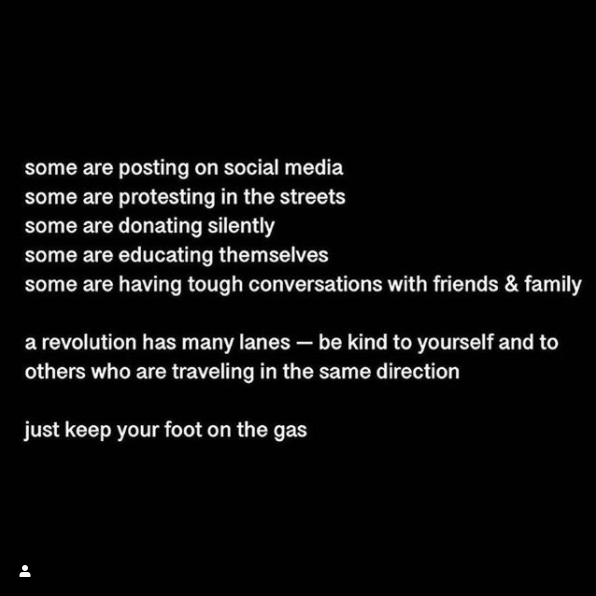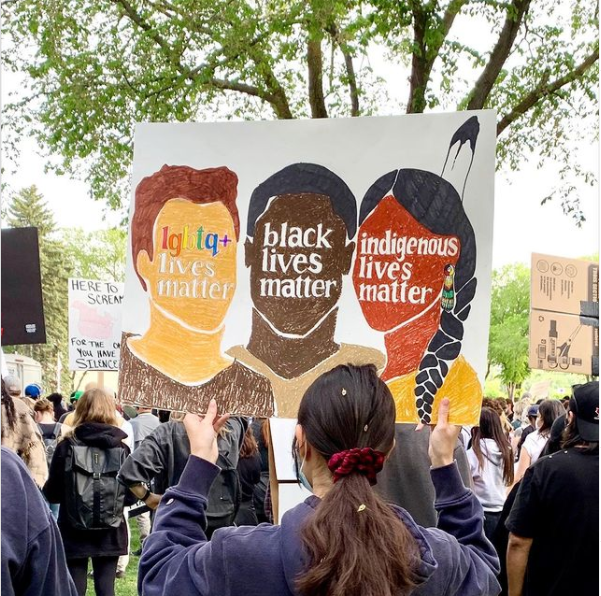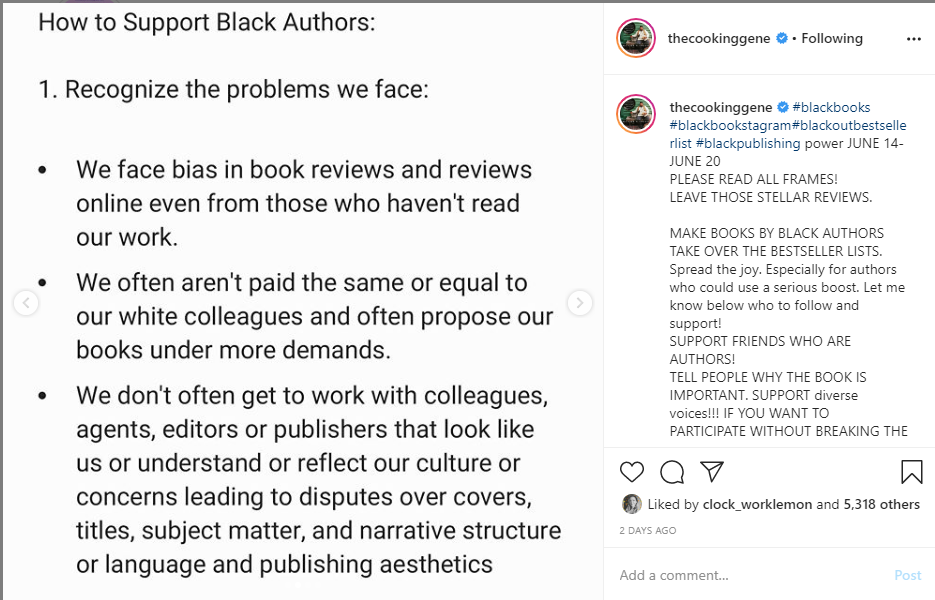We want to read diversely, so we need to talk about publishing
In 2016, I found out my reading was mostly white, feminist women. So from then on, I’ve been working on diversifying my reading and there have been some surprising insights on my own habits, the publishing industry, and the struggle against systemic factors that prevent equity and anti-racism.
In this post, I’m going to outline where I was and then dig into my reading stats since 2016 to see if there has been improvement.
If you are on the start of your journey of unlearning racism and realizing white privilege – I’ve shared some books that I’ve read and learned from over the past couple of years (found at the bottom of the post). I’d love to hear your suggestions in the comments below too.

TL;DR (too long; didn’t read)
- The publishing industry is hella white and that prevents true visibility of diverse writers.
- When not actively aware of reading diversely, I can not seem to break my trend of only reaching 22% books read in a year by diverse writers.
- This is weirdly reflective of the diversity percentages of who is working in publishing.
- Moving forward, there are tactics we can employ to support writers and push for equity in publishing.
- Everyone deserves to see themselves reflected in books (and popular culture overall). We need to reflect on the damage of the dominance of the white perspective in publishing and encourage moving forward to honour everyone’s experience.
2016 – Reading White Ladies
So ya, I was starting from square one. When I reread my blog post from 2016, I remember how nervous I felt just breaking this into categories in a respectful way (and did an evening of research to figure it out). Now that I reflect back, I don’t think I thought, “I don’t see colour” but I definitely did not feel equipped to discuss race in a frank and open manner. I was starting to realize I didn’t know much about diversity… and I had no idea how much I needed and was about to learn over the next 4ish years.
Even so, this list is still embarrassing… why didn’t I say White Cis Female and White Cis Male? I’m pretty sure I listed this in terms of most read to least read but I’m not digging it. I’m upending this list for the rest of the post.
Here’s the stats:
- Cis Female: 30/45
- Cis Male: 12/45
- LGBTQ+: 3/45
- Brown: 3/45
- Asian: 2/45
- Indigenous: 1/45
- Black: 0/45
22% of my book reading was written by a diverse author.
2017 – Actively Trying to Read Diversely
In 2017, I was avidly trying to read diversely and it was illuminating. However, when I tallied up how I did over the course of the year, I was dismayed. I only read 65% diversely that year. My partner sent me the Lee & Low Baseline Survey (2015), which monitors the publishing industry for diversity and what’s being published. I was shocked at the numbers and I’m really appreciative of this study to show the pervasiveness of the white perspective in the industry.
According to the survey, just under 80 percent of publishing staff and review journal staff are white. The rest are comprised of Asians/Native Hawaiians/Pacific Islanders (7.2 percent), Hispanics/Latinos/Mexicans (5.5 percent), Black/African Americans (3.5 percent), and biracial/multiracial people (2.7 percent). Native Americans (0.5 percent), and Middle Easterners (0.8 percent) of publishing staff.
Diversity Baseline Study 2015, Lee & Low
What was most curious to me was how I felt throughout the year. Sometimes, I felt tired by the challenging reading and new perspectives that I would fall back to my comfortable ‘white lady’ books for ‘a break’. Then, I clued in and thought, “holy shit, people from other backgrounds must get so tired of reading about the white perspective.”
There is something calming about reading another person’s work whose perspective is similar to your own – it helps you feel not alone and I think EVERYONE should have that chance. Other ethnicities have been denied that to this day due to barriers in publishing and society at large.
2018 – Fallen off the Wagon
In 2018, I didn’t consciously focus on reading diversely and it shows. Ugh. Here are the numbers:
- Black – 3/48
- Indigenous – 2/48
- Brown – 1/48
- Asian – 4/48
- LGTBQ2S+ – 1/48
- White – 37/48
22% of my book reading was written by a diverse author.
Yikes. This is a shame as its shows not being aware took me right back to where I started.
With access to other learning opportunities, I was waking up to the atrocities towards Indigenous peoples that Canada is guilty of. I went to work events that were informative and difficult. Reflecting back, I made mistakes while I was learning – I was on the cusp of realizing my own white privilege and fragility but not quite there yet.
2019 – Learning and Unlearning
This year, I leaned more into attending more EDI events at my workplace. I thought I was making good strides in my learning. But upon analysis of my reading again… the numbers are not better.
- Black – 1/44
- Indigenous – 0/44
- Brown – 1/44
- Asian – 7/44
- LGTBQ2S+ – 2/44
- White – 33/44
25% of my book reading was written by a diverse author. HOW DO I BREAK OUT OF THIS CYCLE?! WHY IS THIS DIFFICULT!? There are so many incredible diverse writers. Arrrrggggghhhhh!
I want to read interesting and different stories. It looks like I need to be more aggressive; do more research and keep making a concentrated effort to seek them out. Wouldn’t it be amazing if diverse writers and stories were as easy to find as the current “mainstream” ones? Is it weird that my numbers are in line with diversity of staff in publishing houses in the U.S? YES.
LET’S FIX THIS PUBLISHING WORLD!

2020 – Digging Deeper (Personally and Professionally)
In 2019, Lee & Low did another survey to see where we are after 2015’s results. Recent years have been a historic moment in history; powerful shifts like the #MeToo movment, more visibility for diverse writers, and most recently, the Anti-Racism movement that’s happening right now.
Has the publishing industry changed? I’m willing to wager not much by analyzing my simplistic reading statistics, which is both my fault as well as systemic problems in society.
Let’s find out…
“The 2015 survey reported that overall, 79 percent of people who work in publishing self-report as White. Given the sample size difference, this 3 percent change in White employees does not meet the bar for statistically significant change. There is no discernible change to any of the other racial categories. In other words, the field is just as White today as it was four years ago.“
Diversity in Publishing (2019), Lee & Low
I’m closely watching #PublishingPaidMe as authors push for more transparency and better payment for Black authors. I think there are clear connections to the dominance of White people in publishing to issues of access to diversity. Writer Michael W. Twitty laid out some of the issues (screenshot below).

It is important that if we want to see more diversity in books that we support authors by purchasing and/or reviewing their work to increase their visibility.
Moving Forward – Foot on the Gas
By writing this post, I’ve learned that I consciously have to seek out diverse writers and be mindful of the systems in place that prevent me from discovering these authors when I’m not vigilant about it. Here’s how I’m doing so far.
- Black – 8/54
- Indigenous – 3/54
- Latinx – 0/54
- Middle Eastern – 1/54
- Asian – 4/54
- LGTBS2S+ – 4/54
- White – 26/54
In 2020, 37% books read this year were written by diverse authors. Time to get researching and purchasing (especially Indigenous, Latinx and Middle Eastern writers).
Books on Equity that are a Good Place to Start
These are books that I’ve read in the past year. They cover different aspects of inequality in our world.
White Fragility: Why it’s so hard for white people to talk about racism by Robin DiAngelo
Read this for tools on how to identify your white fragility and learn how to approach how you come to the work of anti-racism. It’s self-reflective, educational, and important.
21 Things You May Not Know About the Indian Act: Helping Canadians Make Reconciliation with Indigenous Peoples a Reality by Bob Joseph
Bob Joseph explains the effects of the Indian Act of Canada. It’s shameful. This will impart a need to stand up for First Nations people and support them how THEY want to move forward in the future.
Born a Crime by Trevor Noah
Trevor Noah’s memoir about growing up in South Africa is remarkable. I had so many “ah ha!” moments while reading it and it has stayed with me since reading it in 2018.
“People love to say, “Give a man a fish, and he’ll eat for a day. Teach a man to fish, and he’ll eat for a lifetime.” What they don’t say is, “And it would be nice if you gave him a fishing rod.” That’s the part of the analogy that’s missing.”
― Trevor Noah, Born a Crime: Stories From a South African Childhood
Good Company: The Community Issue (Issue 1) by Grace Bonney
This issue (a short-lived magazine that was AMAZING) features many stories of diversity and creating an inclusive community. I especially enjoyed the pieces sharing perspectives of those living with disability.



Leave a Reply